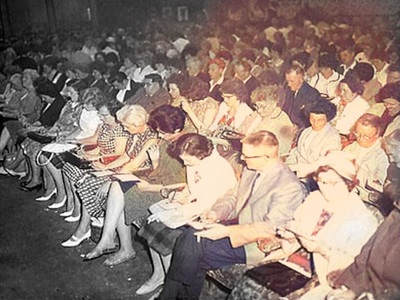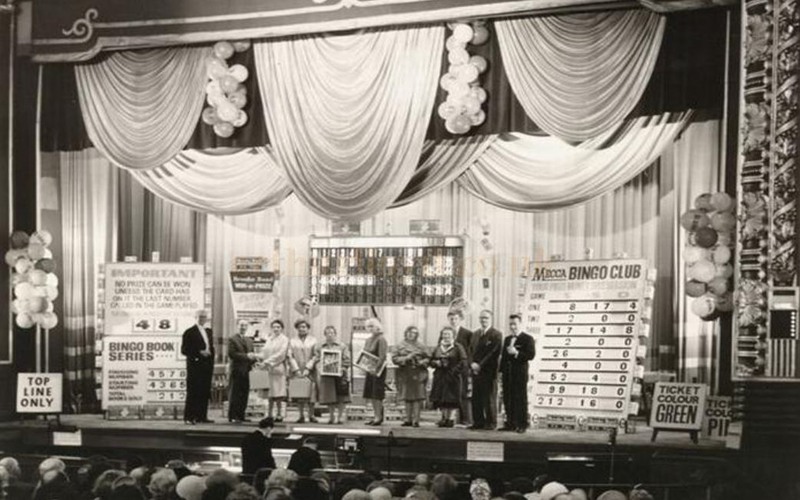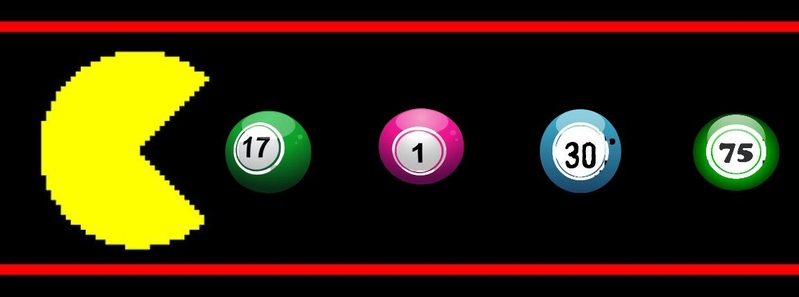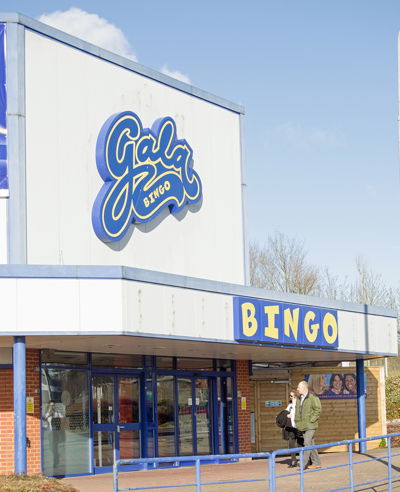 It took a long time for the country to get back to normal after the end of World War 2. It took a long time for towns and cities to rebuild, for infrastructure to be built and improved upon, and for people to heal after devastating losses.
It took a long time for the country to get back to normal after the end of World War 2. It took a long time for towns and cities to rebuild, for infrastructure to be built and improved upon, and for people to heal after devastating losses.
One thing that was constant in people’s lives though, was the game of bingo.
It became popular during the war as the game was shared between nations by the soldiers fighting alongside each other, and then between friends and neighbours who were looking for ways to enjoy themselves.
It wasn’t the game as we know it today, there were no bingo halls yet for example and the idea of a bingo caller being a job was unheard of, but the bingo lingo we all like to talk about was already in use, and a change to the laws of the land was about to ignite the flame that would turn bingo into something of a National treasure.
This is a sister post to our article on the Wartime bingo boom, so if you haven’t already read that one, you might want to nip over and give it a read first to bring you up to speed.
Post War Bingo Boom

If you have already read our article on the Wartime bingo boom, you will know that the game of bingo provided a vital service during that troubled time, and after helping to keep people’s spirits up in the 40s, it wasn’t forgotten.
Many people had fallen in love with the game during the war, and when the war was over they saw no reason to stop playing, quite the opposite in fact!
Incredibly though, since commercial gambling venues were still mostly illegal in the UK until the Gambling Act of 1960, bingo survived as a recreational past time for the most part.
For 20 years or so people played in groups of friends, or at larger gatherings or fund raisers perhaps, with modest prizes that might not even be financial – things like cakes, washing powder, or trinkets.
Remember, rationing didn’t completely end until 1954, so these things would be very welcome.
Once bingo halls became legal though, people didn’t need telling twice. This was where memberships came in to use, because in order to run a legal bingo hall you had to set it up as a member’s only club, and earnings had to come from membership fees and takings, not from entry fees on the door.
Bingo club membership survives to this day.
From 1960 onwards, at least 1 new bingo hall was opened in the UK every single year all the way up to 2005, when the industry was in serious decline. Obviously, some venues closed in that time too (the peak was in the 80s as you will read below), but it goes to show that bingo was big business for a long time.
Just 3 years after the Gambling Act was passed, there were more than 14 million bingo club members in the UK, and in 1965 Mecca estimated that 150,000 people per day played in their bingo halls.
To put that into perspective, the UK population in 1963 was around 53.5 million, so over 26% of the overall population played bingo. However, a good 17% of the population will have been minors, so if we take out those who were under age and therefore not eligible to play, we get over 32% of the eligible population regularly visiting bingo halls.
Things ticked along nicely well into the 1970s, with no major changes to the industry but a loyal fan base supporting it and enabling it grow year on year.
The 1980s: Golden Age of Bingo

If you think back to the fashions and trends in the 80s, it was kind of a perfect match for bingo.
Bold colours, crazy fashion choices, massive hair, blingy drinks like Babycham, Cinzano, and… pints of snakebite, plus a thriving music scene.
Now think of the old bingo halls.
They were often in old theatres or cinemas, done up to match the slightly garish trends of the era, with questionable colour choices and sometimes even themed designs like cruise ships and the like.
The political and economic situation may not have been ideal back then, but in a way that just made bingo an even better choice for those wanting a cheap night out that was still loads of fun.
Remember too, that this was before the internet, Netflix, and 300 TV channels to choose from. It was before mobile phones. Going out was much more of an event and it took a lot more effort to arrange.
Bingo halls were packed with people of all ages wanting to get dressed up, have a drink, and enjoy themselves, and with the introduction of new-fangled inventions such as digital boards flashing up the numbers that had been called, bingo felt like a pretty trendy place to be too.
Plus, the fact that it was so easy to set up a game meant that it was just as popular outside of bingo halls as inside them.
Pubs, holiday camps, social clubs, working mens clubs, churches, amusement arcades – any place where people would regularly get together seemed to offer bingo – and the country was also becoming far less reserved, so bingo callers/entertainers could tell the odd naughty joke, or use funny bingo lingo that was still in use back then.
 By the end of the 1980s there were around 1,600 bingo venues enjoying regularly packed houses, not to mention all of the smaller multi-purpose venues offering the game as well.
By the end of the 1980s there were around 1,600 bingo venues enjoying regularly packed houses, not to mention all of the smaller multi-purpose venues offering the game as well.
Bingo was, quite literally, everywhere.
This was to be the peak of the thriving bingo scene though, because as we enter the 90s, competition for the attention of bingo players ramped up, technological advances came in at speed, and a generation of lifelong bingo lovers began to die off.
But let’s not end on a downer.
This article is about when the going was really good for bingo, so lets leave it at the height of its popularity shall we?
When the halls were full, the prizes were great, and the people were there for a proper night out.
